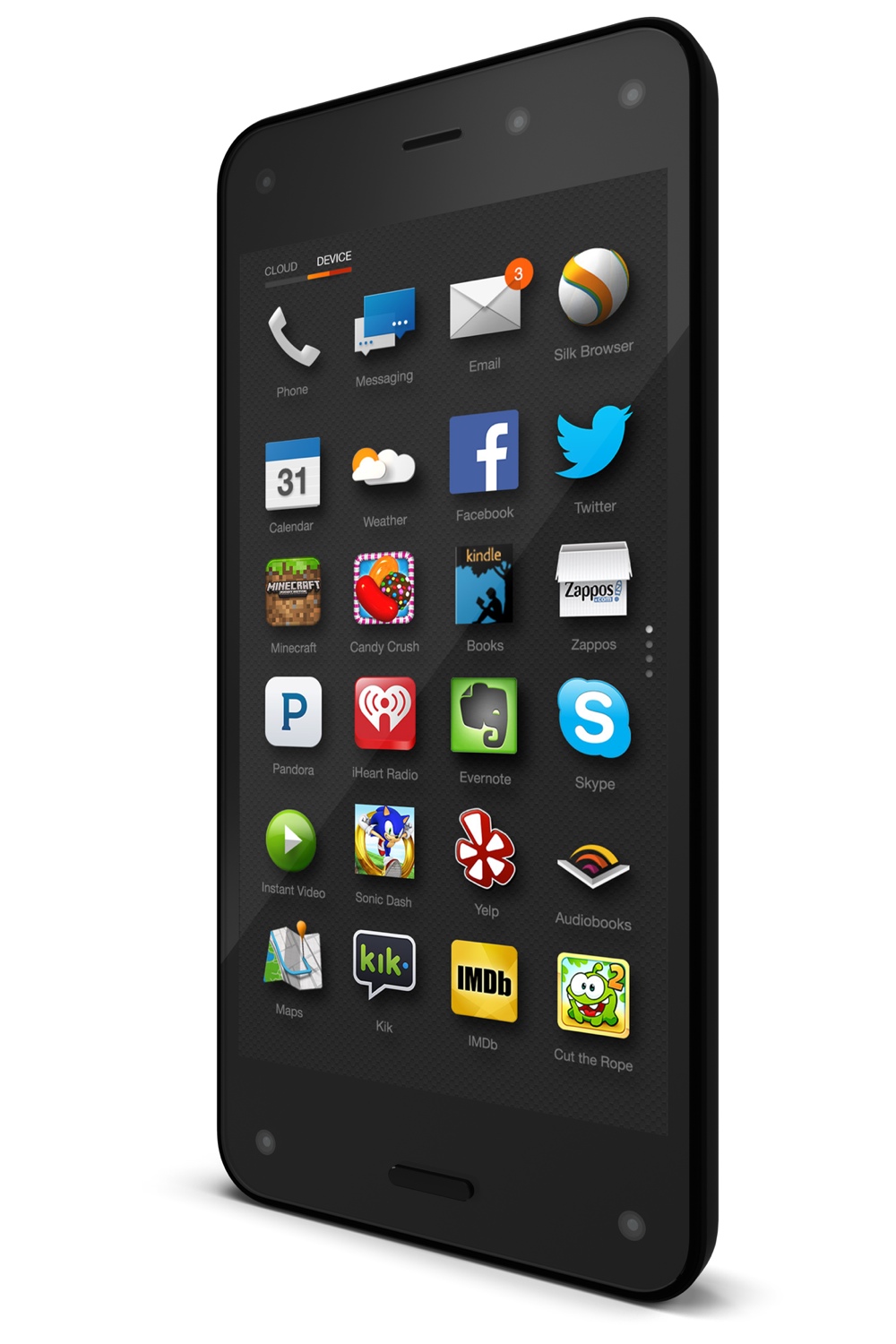
You may have noticed no one’s saying much about Amazon’s new gee-whiz Fire Phone as a gaming device. Amazon itself gave gaming short shrift during the phone’s unveiling yesterday, clipping out all of a minute and a half — from a presentation that ran to nearly an hour and a half — to demonstrate something Jeff Bezos called Tofu Fury.
In the game, you maneuver a little headband-toting cube of pugnacious soy through ordinarily laid out 2D levels with a dash of depth. Tilt the Fire Phone this way or that and your perspective on the 2.5D imagery shifts as if the phone were a tiny shadow box.
You can see the demo in the below video at the 53:45 mark:
“I think you can probably imagine what the dynamic perspective technology can enable for gamers,” said Bezos as he coasted sedately through the demo, qualifying it as “one very quick thing” at the outset, as if to assure the audience he’d move speedily through this show of frivolity. In those four words, he may have unwittingly conveyed all we needed to know about his and Amazon’s vision of gaming on the Fire Phone.
Then he held up Tofu Fury and started moving the phone. The perspective shifted. He moved it some more. The perspective shifted some more. The level sat there, looking like any other level in a platform game. No one ooh’d or ahh’d. The audience was either stunned to silence or as bored as I was. This was Amazon’s vision of cutting-edge gaming on its debut phone? Nintendo’s 3DS with one of its dual screens and all the controller buttons lopped off?
“What you can do here is look around on this image,” said Bezos, demonstrating that feature some more. You can’t look “everywhere,” as he claimed, just slightly left or right, up or down, maybe 45 degrees (at best) from head-on. Bezos explained your job was to rescue Fortune Kitty, a pinkish, catlike cookie crisp. The audience finally reacted by chuckling. I was still, at this point, hoping Bezos might illustrate some interesting new game idea, something that actually took advantage of the motion sensors in a way that factored in the gameplay somehow. But no, he just swiped to indicate the direction he wanted tofu-Jet-Li to move, then watched as the soy block hopped nimbly from point to point, collecting most of a line of blue orbs and landing on the next level down.
“We’re gonna call that good enough, but notice how I can look around!” said Bezos, obsessed with the notion that looking around — even when it has no meaningful gameplay purpose — could sell the idea. It didn’t. To paraphrase the late Douglas Adams, Amazon’s idea of gaming on its Fire Phone hung in the air exactly the way bricks don’t.
Maybe if he’d demonstrated a first-person game where you had to tilt the phone to look around corners, or a puzzle game where seeing what’s on the other side of something helped you calculate the solution. Even then, I’m as leery of this approach to gaming on smartphones as I’ve long been about stereoscopic 3D in movies, TVs and on Nintendo’s 3DS, where it’s actually been the inverse of its technological promise: all surface, no depth.
To be fair, I’m making a mountain out of a molehill: Fire Phone v1.0, with Firefly and its hooks into Amazon’s mercantile backend, is arguably a zillion other things before it’s a games platform. It hardly needs games or a clever gaming interface angle to work. If I suggest that Jeff Bezos doesn’t understand or frankly care all that much about making fireworks in gaming-dom, I’m not sure he’d disagree. Bezos, like Steve Jobs before him, must at least understand that smartphones like the iPhone or Fire Phone won’t have booths the size of city blocks dedicated to them at trade fairs like E3 anytime soon. You’ll probably never play a game like Grand Theft Auto V — a game that earned $1 billion in just three days, clinching the world record for fastest-selling entertainment product across any medium — or Call of Duty: Advanced Warfare on a 4.7-inch screen.
None of that’s news. The problem’s not that anyone wants those games on a smartphone, it’s that Amazon seems not to know how to play up its technology’s strengths. It should have demonstrated a game that actually took advantage of the Fire Phone’s “dynamic perspective” technology. It should have showed off meaningfully motion- or perspective-related gameplay. It didn’t. Instead, its CEO simply panned around an ordinary-looking game — one I’d be just as mechanically comfortable playing on an ordinary iPhone.
More Must-Reads from TIME
- Cybersecurity Experts Are Sounding the Alarm on DOGE
- Meet the 2025 Women of the Year
- The Harsh Truth About Disability Inclusion
- Why Do More Young Adults Have Cancer?
- Colman Domingo Leads With Radical Love
- How to Get Better at Doing Things Alone
- Michelle Zauner Stares Down the Darkness
Write to Matt Peckham at matt.peckham@time.com